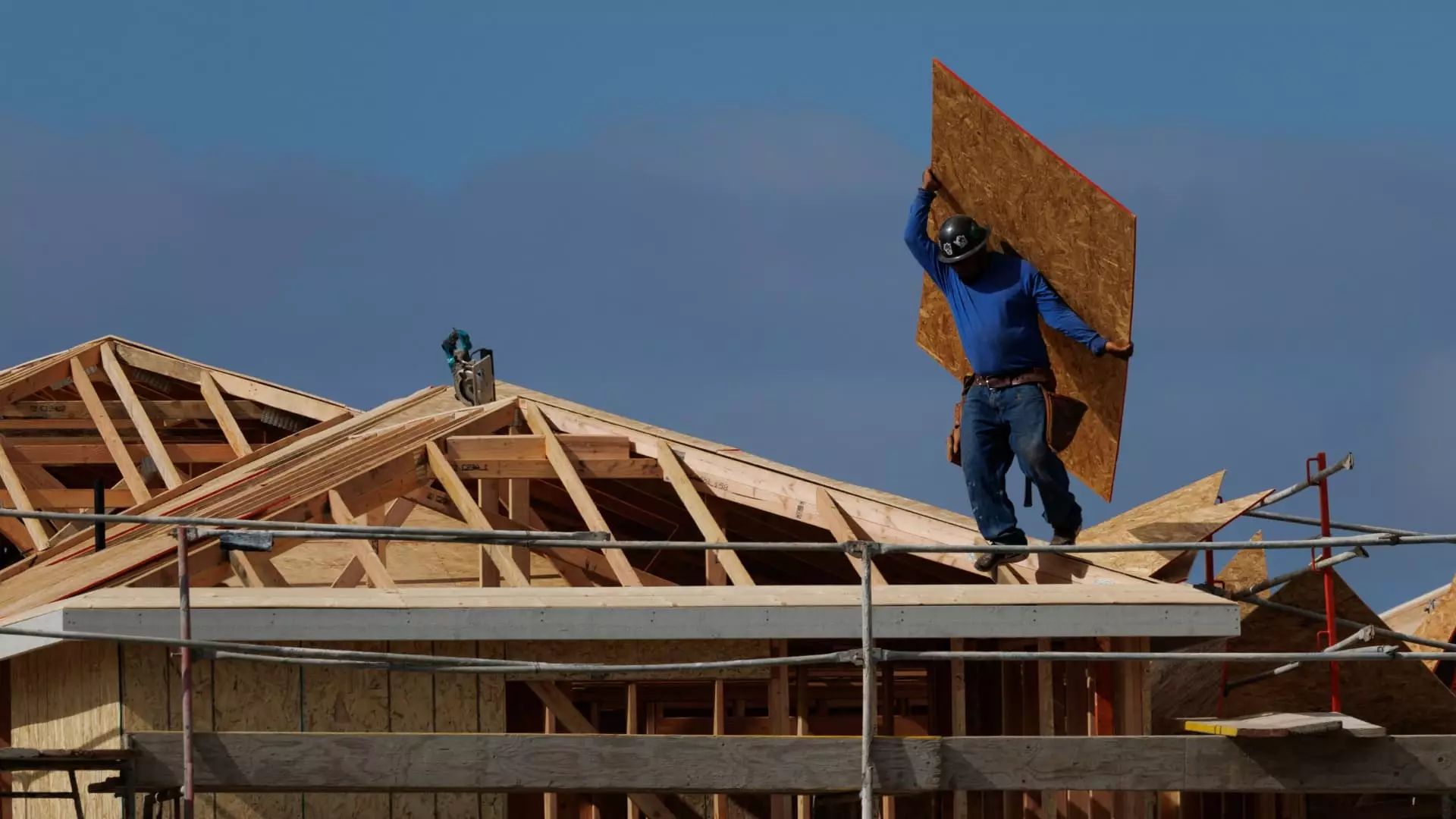The current state of America’s housing market signals more than just a slowdown; it reflects a deeper, systemic hesitation rooted in economic uncertainty. Builder confidence, a key indicator of future activity, remains mired in negativity, with the National Association of Home Builders (NAHB) index languishing below the neutral threshold of 50 for over a year. The modest 1-point increase in July does little to mask a persistent mood of pessimism, much of which hinges on the twin challenges of affordability and rising interest rates. Despite some government intervention via recent tax relief measures, optimism among home builders remains fragile—highlighting an overarching apprehension about the health of the economy and its impact on the housing sector.
What is profoundly troubling is the sharp decline in buyer traffic and the heavy-handed response by builders who, desperate to keep sales afloat, are resorting to aggressive discounts. With 38% of builders slashing prices—an unprecedented move since tracking began in 2022—it is clear that demand has wilted under the weight of economic anxiety. These price cuts, averaging around 5%, are a tangible sign of the sector’s struggle to stabilize. Such strategies, while providing short-term relief, threaten to erode builder margins and undermine the sector’s financial health, which could have ripple effects on the broader economy.
Mortgage Rates and Affordability: The Double-Edged Sword
One cannot discuss the current housing slowdown without addressing the persistent barrier of mortgage rates. Elevated and seemingly intransigent, these interest rates are a formidable barrier for many prospective buyers. Even with recent legislative measures designed to stimulate economic activity, mortgage affordability remains compromised. Builders are armed with various tactics, including buy-downs of mortgage rates, yet these efforts only partially counteract the downward pressure on demand.
This scenario reveals a troubling paradox: policymakers are attempting to energize the economy via tax relief and stimulus, but structural issues like persistent high interest rates and limited affordability continue to dampen housing activity. The sector’s decline is not merely cyclical but indicative of a fundamental misalignment between monetary policy, home affordability, and consumer confidence. The situation underscores the need for a more nuanced approach—balancing rate stabilization with measures that genuinely reduce the cost of homeownership.
Market Dynamics and Regional Disparities
Examining regional variations exposes further fragility. The Northeast shows relative resilience, with builder sentiment slightly improving, while the South and West continue to experience declines. This uneven landscape reflects broader economic disparities and regional housing market conditions. The decline in builder traffic—reaching its lowest levels in over two years—serves as a cautionary tale: without significant policy shifts or structural reforms, the housing market could face a prolonged downturn.
Moreover, the decline in single-family permits and starts is emblematic of a sector retreating from expansion, not just temporarily but potentially for an extended period. The economic indicators are clear: unless significant changes occur to enhance affordability and reduce mortgage burdens, the housing market will continue its downward trajectory through 2025, with declines in both construction activity and buyer confidence.
Implications for the Broader Economy and Policy Directions
This housing landscape questions the efficacy of current policy interventions and reveals a need for more aggressive, targeted measures. The industry’s downturn, if prolonged, threatens to spill into other sectors—construction jobs, real estate services, home furnishings, and local economies dependent on real estate taxes. The current situation demands a shift from superficial stimulus to comprehensive reforms aimed at reducing entry barriers and improving affordability.
As a center-leaning observer, I believe there’s an urgent necessity to recalibrate our approach. While tax relief offers temporary relief, it is insufficient to offset the structural challenges faced by potential homeowners. Policies should focus on lowering mortgage interest burdens, increasing supply through supportive zoning reforms, and investing in affordable housing initiatives. Without these measures, the housing market will remain a harbinger of economic stagnation—something that no modern economy can afford in the long term. The warning signs are stark: unless decisive action aligns economic policy with real estate affordability, the sector will continue its downward spiral, dragging the broader economy along with it.

